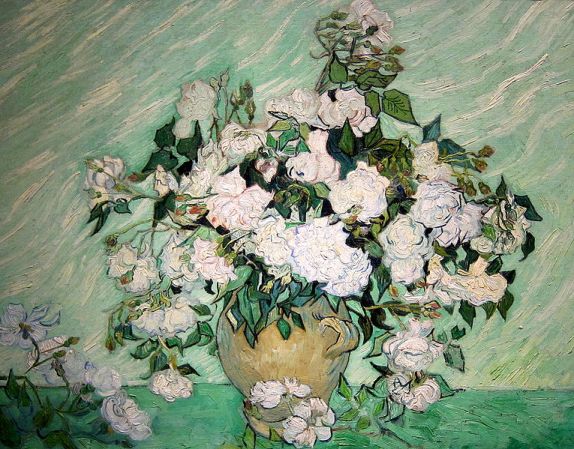Archive
Dalecarlian Horse–A Status Update

¶
Sometimes being a writer leads to perplexities. In RT’s case, he has several projects going at once: 1) Gilgamesh; 2) A Daughter’s Song and Dance (his mother’s childhood memoirs); 3) The Rag Tree; 4) and sundry other occasional preoccupations, at least one of which might end up being very important. Now, the logical approach to all this would be to choose one item, concentrate on finishing it, and then proceed down the list until all of the work has been done. But RT is coming to the realization that he doesn’t work like this.
RT’s modus operandi appears to be working on one of the projects (usually Gilgamesh, but sometimes one of the others) for extended periods of time, at the end of which he picks another of the projects and works on it for a while. The Rag Tree is a special case, exercising its siren call every time RT logs onto the Net–and posting regularly is the blogger’s cardinal virtue.
And then there are the gremlins that like to show up–a new biography of Van Gogh, an incomplete or prospective “quick” translation lying around, and those all-too-familiar but regular and required real-world encounters, like paying the rent.
RT’s conclusion about the unscheduled mess? He likes it. He doesn’t know how or if he can resolve his lack of a fixed agenda, but he feels that it’s wise at least to be honest about his preferences. As far as his departure from Standard Operating Practice, he will say, in our work life, don’t we have a right to pursue more than one obsession at a time? RT knows that this is hardly an efficient approach to doing things, but what is the ROI for love? Or death?
This is all by way of preamble to saying that the last week or so RT has been working on his mom’s memoirs, and he is particularly pleased with the section on the 1939 NYC World’s Fair, with its Dalecarlian Horse (not as large as the one in the photo above) and its many other sights and experiences. He has reached page 150 and thinks that the completed book will probably be around 250 pages. Life is full of surprises and unexpected beauty–and quandries. RT
¶
Photo: Dalecarlian Horse; WikiCmns; Public Domain.
*
Pocket Watch

¤
RT has always wanted a pocket watch. But he has to be realistic about this: he wants something elegant he can pull out of his vest. He admires the beauty of these watches, which tend to be older and better made than wristwatches, those reminders of the practical and the necessary. But training himself to remember to put the watch in his pocket every morning would just add another item to his morning checklist, and that would defeat the purpose of the exercise, which is to let the watch remind him and his circle of days that were a little less restricted by obligations, if only because the watch had not become as ubiquitous as it has. Social status notwithstanding, RT will probably keep the Timex that has served faithfully these many years. RT
¤
Photo: Goldene Taschenuhr; WikiCmns; Public Domain. Author: ON.
*
Dodos–Saving the World for Wildlife *and* People

•
Well, there’s no point in getting angry over human appetite; Mauritius is not the largest of islands, and the dodos were big (3 ft. tall), flightless, and easy prey. Readers should also note that while the demise of the Dodo has become a cautionary tale, few people are aware that the Dodo’s closest genetic relative, the Rodriguez Solitaire, also went extinct soon after discovery.
So what can we make of this uncomfortable bit of history? Maybe the first place to look for an answer is the present. What’s remarkable, from RT’s perspective, is a) the survival of Mauritius’s ecosystem and b) the impressive prosperity enjoyed by its people. This is not to say that humankind’s toll on the island’s wildlife hasn’t been significant; over the course of four centuries, it has. More than 100 species of plants and animals have gone extinct, and less than 2 percent of the original forest cover remains. But here is the good news: conservation organizations, starting in the 1980s, have saved the Mauritius kestrel, Mauritius parakeet and pink pigeon; undertaken forest management and restoration; and established captive breeding programs and endemic nurseries. Three organizations are engaged in the effort: the National Parks and Conservation Service; the Mauritian Wildlife Foundation; and the Durrell Wildlife Conservation Trust.

The history of the nation is colorful, as we might imagine: discovered by the Portuguese, Mauritius was subsequently colonized by the Dutch, French, and British, the last of who granted independence to the country in 1968. The country has a political system modeled on the Westminster’s and a history of peaceful elections, despite its diverse demographic: the largest segment of the population is of Indian background, but the number of French-, Creole-, and Sino-Mauritians is also significant. Not surprisingly, the country is polyglot, with English and French being “unofficial” official languages, but Mauritian-Creole is the mother tongue of most citizens.
•
As for the Dodo: recent efforts have led to the recovery of at least 17 Dodo skeletons, and, in 2007, the most complete Dodo skeleton yet recovered was found in a highlands cave. No DNA has been extracted so far, but these finds are rapidly advancing scientific study of the bird.
RT
•
Image: top: Painting of a dodo head (1683); (one of the last images of the bird made from life). Cornelis Saftleven. bottom: Mauritius Pink Pigeon; Author, Trisha M. Shears. Both photos: WikiCmns; Public Domain.
*




